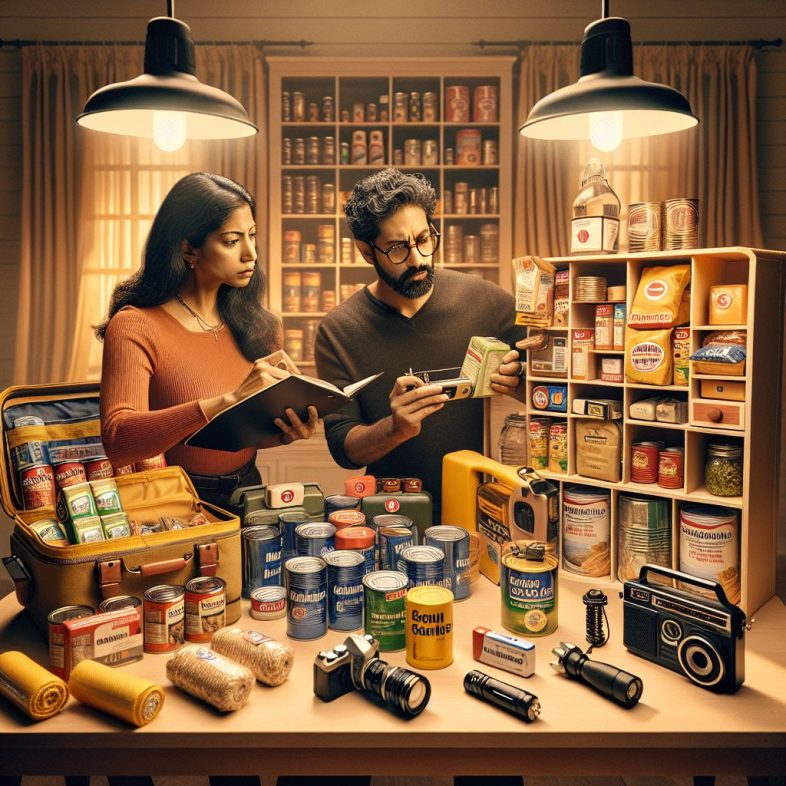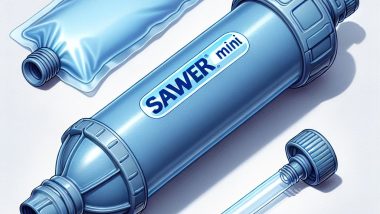-
Understand the unique challenges of urban survival
-
Essential items for your urban survival kit
-
Techniques for navigating and finding your way in a city during a crisis
-
Strategies for creating a safe and secure shelter in urban environments
-
Communication methods to stay informed and connected
When it comes to survival, the concrete jungle is a world apart from the wilderness. Here, amidst skyscrapers and subways, the urban survivalist must navigate a landscape that is both familiar and fraught with unseen dangers. Whether it’s a blackout, a natural disaster, or a civil disturbance, being prepared is about more than just having a few supplies on hand; it’s a mindset.
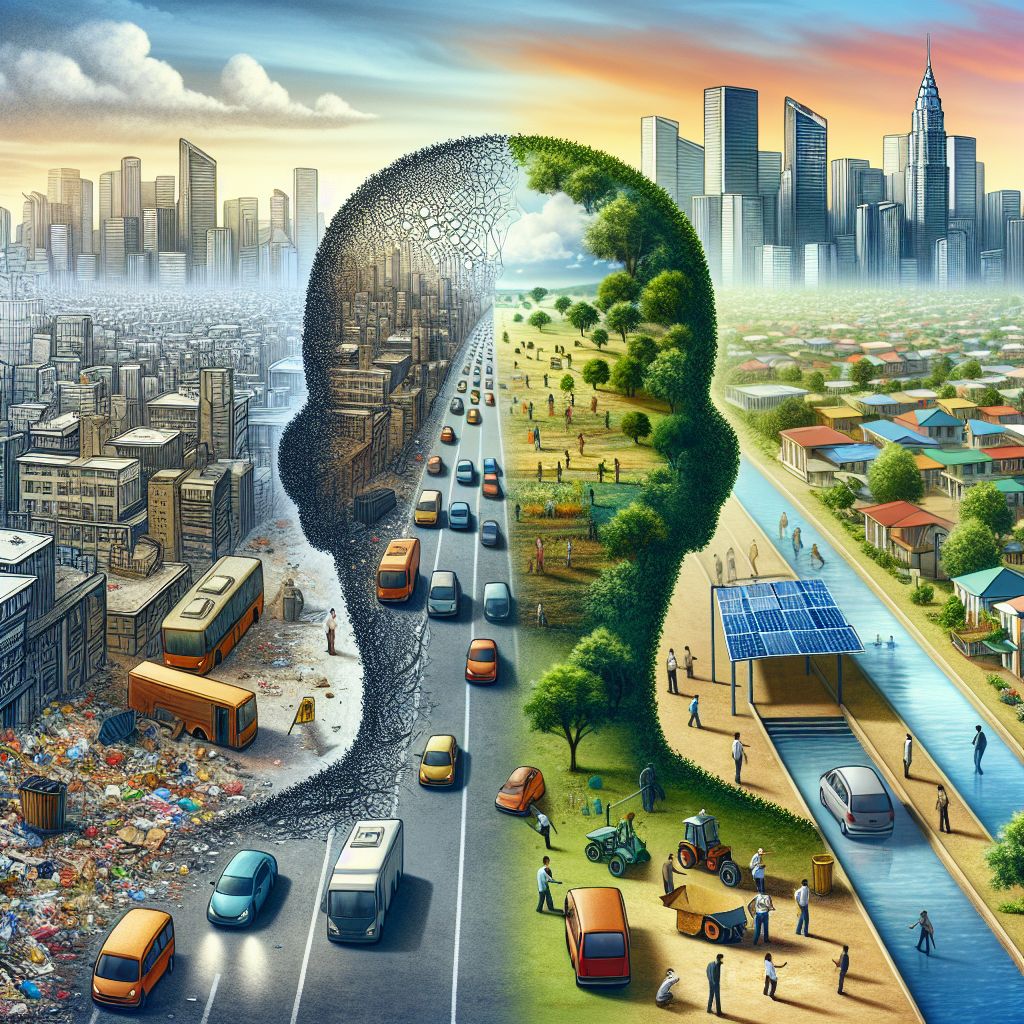
Shifting Your Mindset for Urban Preparedness
The first step in urban prepping is changing the way you think. It’s not about paranoia; it’s about practicality. Most importantly, it’s about recognizing that everyday conveniences can become liabilities in an emergency. The elevator you ride every day? It could be out of service. The grocery store around the corner? It could be empty. By acknowledging these possibilities now, you can start to plan and prepare effectively.
Assessing Risks in the Concrete Jungle
Urban environments are complex systems with their own unique risks. These can range from power outages and water supply disruptions to more severe threats like hurricanes or terrorist attacks. Start by assessing the risks specific to your city. Is it prone to certain natural disasters? What about infrastructure vulnerabilities? Understanding these risks will inform your preparation and help you prioritize your actions.
Build Your Urban Survival Kit
Every urban survivalist needs a kit, but not just any kit. Your urban survival kit should be tailored to your environment, your needs, and the specific risks you’ve identified.
Essentials for Your Urban Go-Bag
Your go-bag is your lifeline. It should be packed with essentials but remain light enough to carry if you need to move quickly. Here’s what you need:
-
A sturdy backpack to hold all your items
-
Water and a way to purify it
-
Non-perishable food for at least 72 hours
-
A first aid kit with personal medications
-
A multi-tool and a compact flashlight
-
A portable charger and emergency contact list
Remember, this bag is your ticket to survival in the first critical hours and days of a crisis.
Compact Tools for Maximum Efficiency
Space is at a premium in an urban setting, so choose tools that are compact and serve multiple purposes. A multi-tool, for example, can be a lifesaver, combining knives, pliers, and other handy implements in one device. A compact flashlight or headlamp can light your way during power outages, and don’t forget a portable charger to keep your phone and other devices powered up.
Water Purification in an Urban Setting
Water is life, and in an urban disaster, your tap may not be a reliable source. Here’s what you can do:
-
Carry a portable water filter or purification tablets in your go-bag
-
Know the location of nearby water sources like rivers or lakes
-
Store water at home in safe, clean containers
Because in a crisis, you can’t afford to be without clean drinking water.
Stay tuned for the next installment, where we’ll delve into the importance of non-perishable foods, communication strategies, and more. And remember, preparation today can make all the difference tomorrow.
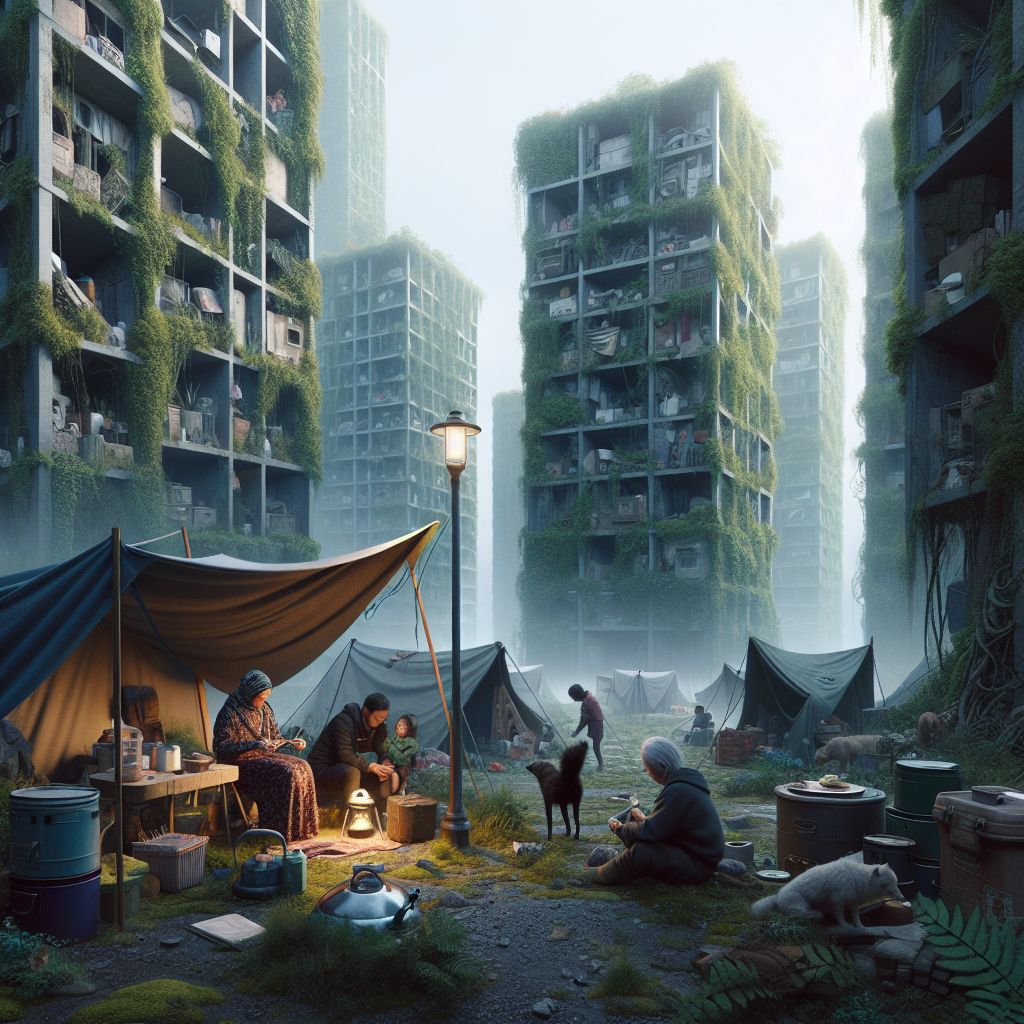
Shelter and Safety in the Urban Wilderness
When chaos strikes, your home may not always be the safest place to stay. In some cases, you may need to leave in a hurry. That’s why knowing how to find or create shelter in an urban environment is a crucial skill.
But where do you go when your apartment building is compromised, or your street is flooded? Look for structures that are built to withstand disasters, like schools or community centers designated as emergency shelters. Parking garages with concrete structures can also provide temporary refuge from high winds and debris.
Always have a mental map of these safe havens in your vicinity. Besides that, remember to consider accessibility, as elevators may not work and roads could be blocked. Planning multiple routes to these locations is a smart move.
Identifying Safe Havens Amidst Chaos
Safe havens are more than just a place to stay; they’re a place to regroup and plan your next move. When identifying these locations ahead of time, consider the following:
-
Proximity to your home or workplace
-
Structural integrity of the building
-
Availability of resources like water and first aid
-
Capacity and potential crowding
-
Security and potential for law enforcement presence
Creating a Secure Temporary Shelter
If you find yourself needing to create a temporary shelter, you need to think practically and act quickly. Abandoned vehicles, for example, can provide a windproof and somewhat insulated space. A sturdy cardboard box can be lined with newspaper or bubble wrap for insulation against cold urban nights.
When creating a shelter, remember that your goal is to stay dry, insulated, and hidden if necessary. A tarp or large garbage bags can be a versatile tool, serving as a makeshift tent, ground cover, or rain poncho.

Self-Defense and Conflict Avoidance
In an urban disaster, the risk of encountering conflict is real. Crowds can become unpredictable, and not everyone will have good intentions. Therefore, your ability to defend yourself, while avoiding conflict when possible, is vital.
Self-defense doesn’t always mean physical confrontation. In fact, the best defense is often avoiding dangerous situations altogether. Be aware of your surroundings, move with purpose, and if you sense trouble, trust your instincts and leave the area.
Non-Lethal Defense Options
When avoidance is not possible, non-lethal defense options can help protect you without escalating the situation. These include:
-
Pepper spray, which can deter an attacker and give you time to escape
-
A loud whistle or personal alarm to attract attention and help
-
Self-defense techniques – even basic moves can be effective
Remember, the goal is to create distance between you and the threat so you can reach safety.
De-escalation Techniques in Crisis Situations
De-escalation is an art, and in tense situations, it can be more powerful than physical force. Use a calm voice, non-threatening body language, and clear communication to defuse a potentially violent encounter. Here are some tips:
-
Keep your hands visible and avoid sudden movements
-
Maintain a safe distance from the individual
-
Express empathy and listen to the person’s concerns
-
Avoid arguing or challenging the individual
-
Seek a peaceful resolution or an opportunity to exit the situation
Creating an Urban Survival Network
Surviving an urban disaster is not a solo mission. Building a network of prepared neighbors and friends can significantly increase your chances of survival. Share resources, skills, and information to create a stronger, more resilient community.
Building a Community of Prepared Neighbors
Start by organizing neighborhood meetings to discuss emergency plans. Encourage everyone to share skills, like medical training or mechanical knowledge, that could be useful in a crisis. Create a contact list that includes everyone’s phone numbers, email addresses, and any special needs or resources they might have.
Leveraging Local Resources and Knowledge
Local resources, such as community gardens, can provide food, while neighborhood watch programs can enhance security. Tap into the knowledge of long-time residents who may know the area’s history and its response to past emergencies. This local wisdom can be invaluable when planning your survival strategy.

Staying Informed and Alert
Information is a critical commodity in an emergency. It helps you make informed decisions about where to go, what to do, and how to stay safe. Keep a battery-powered or hand-crank radio on hand to receive updates from local authorities.
Setting Up Information Streams During Disasters
When disaster strikes, regular communication channels may fail. It’s essential to have alternative methods to receive updates. Consider the following:
-
Signing up for emergency alerts from your city or county
-
Using apps that provide real-time information
-
Establishing a check-in protocol with friends and family
Staying informed also means staying charged. Keep a solar charger or extra batteries to ensure your devices remain powered.
Navigating Misinformation in Crises
In the digital age, misinformation can spread as quickly as legitimate news. Verify information from multiple sources before acting on it, and be wary of rumors or unverified reports on social media. Stick to trusted news outlets and official communications for the most accurate information.
Example: During a citywide blackout, rumors of a dam breach caused panic. Those who checked with official sources knew it was a false alarm and avoided unnecessary evacuation.
Part three of our series will cover mental health, coping mechanisms, and more, ensuring you’re equipped not just to survive, but to thrive in the face of urban adversity.
As an urban survivalist, your mental health is just as important as your physical well-being. The stress of a disaster can take a toll, but with the right strategies, you can maintain a clear head and a strong spirit.
Mental Health and Coping Mechanisms
In the aftermath of an emergency, it’s normal to feel overwhelmed or anxious. To cope with these feelings, practice stress-reduction techniques such as deep breathing exercises, mindfulness, or meditation. Keep a small journal in your go-bag to document your thoughts and feelings, which can be a powerful tool for mental health.
Another key aspect is maintaining a routine as much as possible. Structure can provide comfort in times of chaos. If you’re with family or a group, try to establish a daily schedule that includes meals, rest, and even leisure activities if circumstances permit.
Sustainable Living Practices in Urban Settings
Long-term survival in an urban environment also means adapting to live sustainably with the resources at hand. Here are some tips:
-
Learn to grow food in small spaces, like balconies or windowsills.
-
Collect and reuse rainwater for plants or sanitation.
-
Compost organic waste to reduce trash and create soil for gardening.
-
Practice energy conservation to make the most of limited resources.
These practices not only ensure survival but also contribute to a healthier environment.

Enhance Your Skills with the Right Training
Knowledge is power, especially when it comes to survival. The more skills you have, the better prepared you’ll be to handle any situation that arises.
Urban Survival Courses and Resources
Consider taking urban survival courses that are often available through community centers, online platforms, or local outdoor stores. These courses can teach you essential skills like first aid, self-defense, and emergency response. Besides that, resources like books and online forums can provide valuable information and tips from experienced preppers.
Practicing Your Skills in Real-World Scenarios
The best way to ensure you can rely on your skills is to practice them regularly. Set up drills to practice evacuating your home or work, or spend a weekend living off the supplies in your go-bag. The more you practice, the more confident you’ll become in your abilities.
Urban Prepper’s Survival Guide
How to Prepare for a Power Outage in the City?
To prepare for a power outage, have a kit ready with flashlights, extra batteries, a hand-crank radio, and a way to charge your phone. Consider investing in a generator or solar charger for longer-term outages.
What Are the Key Components of an Urban Go-Bag?
An urban go-bag should include:
-
Water and a portable filter or purification tablets
-
Non-perishable food like energy bars and dried fruits
-
A first aid kit with personal medications
-
A multi-tool and a flashlight or headlamp
-
Emergency blankets and a whistle
-
Local maps and a list of emergency contacts
How Can You Find Clean water in an Urban Disaster?
In an urban disaster, you can find clean water by:
-
Using a portable water filter on collected rainwater or from streams
-
Boiling water from uncertain sources for at least one minute
-
Utilizing water purification tablets according to their instructions
Always have a backup method for purifying water.
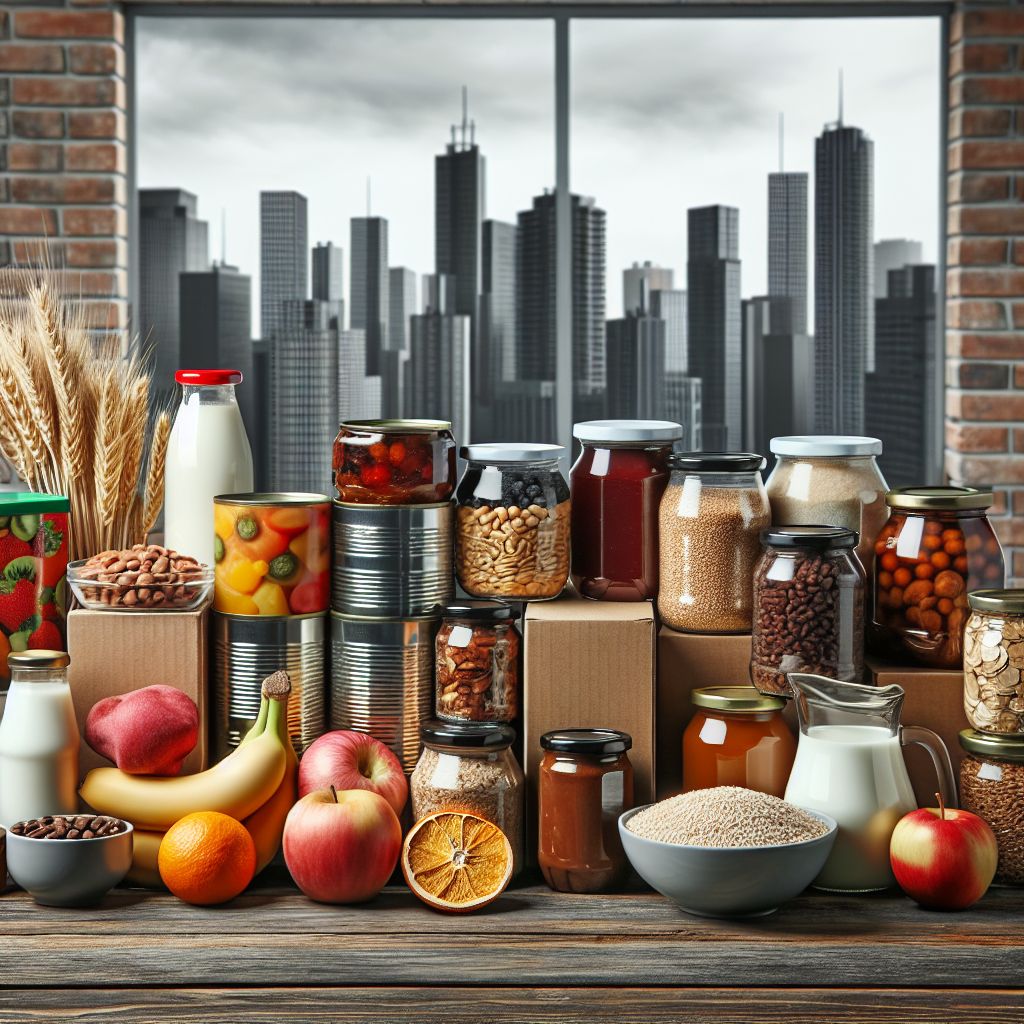
What Are the Best Foods to Stockpile in an Urban Environment?
The best foods to stockpile are those that are non-perishable and nutrient-dense, such as:
-
Canned goods like vegetables, fruits, and beans
-
Dried foods like pasta, rice, and lentils
-
Protein sources like nuts, jerky, and canned fish or meat
-
Long-life dairy products and alternatives
-
Energy bars and comfort foods to maintain morale
Example: In the wake of Hurricane Sandy, those with a stockpile of canned goods, water, and a means to cook without power were able to sustain themselves until help arrived.
How to Stay Safe When Seeking Shelter During Urban Chaos?
When seeking shelter during urban chaos, prioritize locations that are:
-
Known to be structurally sound and secure
-
Not in flood-prone areas or near potential hazards
-
Equipped with emergency supplies and resources
Always inform someone of your location and stay updated on the situation through reliable information channels.
In conclusion, urban prepping is about more than just stockpiling supplies; it’s about developing a comprehensive plan that covers all aspects of survival. From the essentials in your go-bag to the skills you need to navigate and endure an urban disaster, every detail matters. Stay informed, stay prepared, and remember that your greatest asset in any emergency is your ability to adapt and overcome.
For those looking to take their urban survival preparedness to the next level, remember that the right gear can make all the difference. Whether it’s a reliable multi-tool, a sturdy backpack, or a comprehensive first aid kit, you can find what you need at Outdoor and Urban Survival Gear. They offer a range of products tailored for the urban survivalist, ensuring you’re equipped for whatever challenges come your way.
